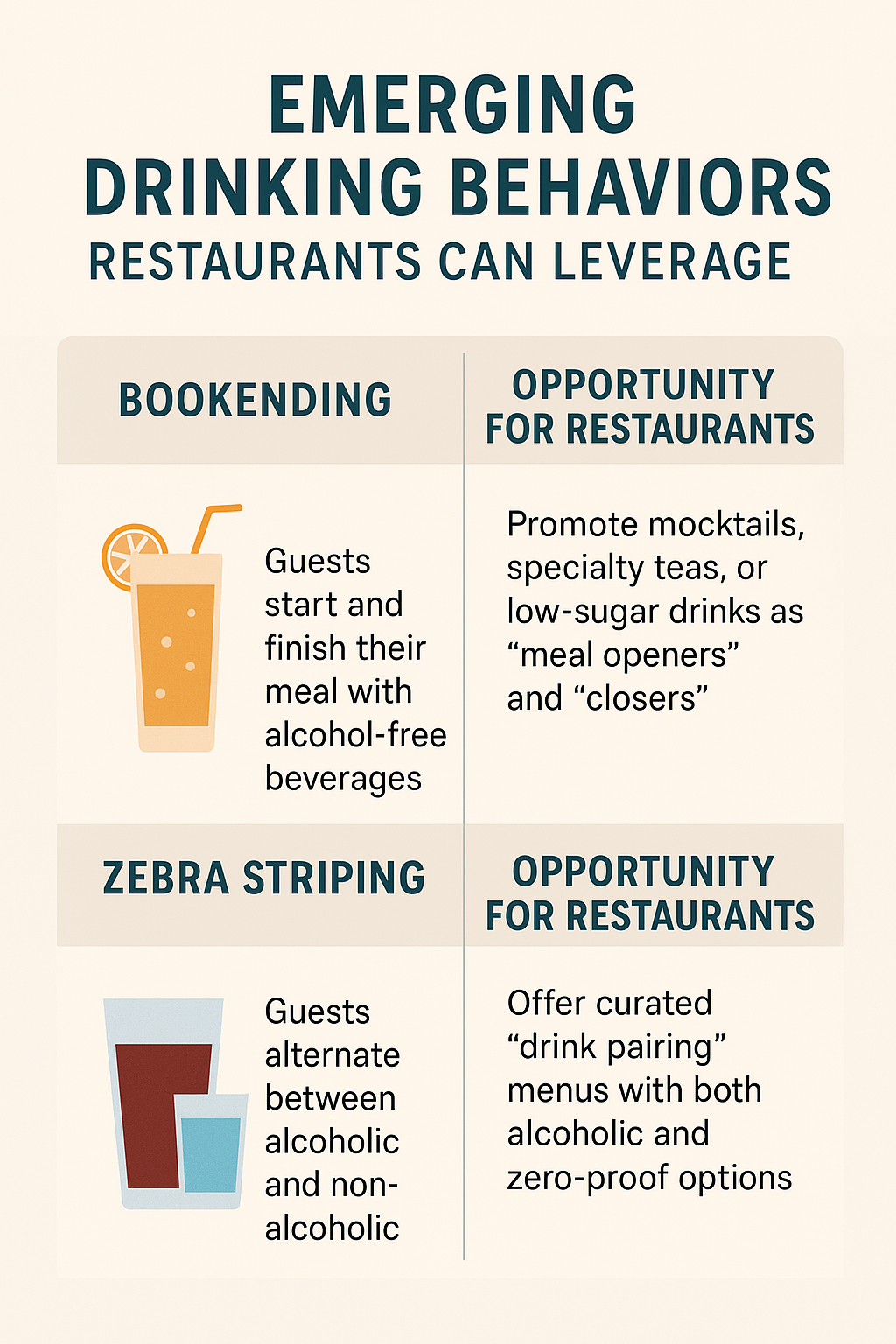The Sober October Opportunity for Restaurants
3 Min Read By MRM Staff
Sober October has gained traction in the U.S., particularly among Gen Z and Millennials and is part of a broader "sober-curious" movement, indicating a clear shift in consumer behavior. Gallup reports that U.S. drinking rates have fallen to a record low of 54 percent, and more women than men now view moderate drinking as unhealthy. Campaigns like this and Dry January present both a challenge and an opportunity for restaurants as guests who are abstaining may opt to stay home unless operators can cater to their preference.
“Let customers know that you’re supporting their journey,” said Professor David Nutt, alcohol expert and co-founder of SENTIA Spirits. “It will make you stand out to health-conscious consumers. Make sure they know that these aren’t just flavoured waters/or soft drinks, that customers aren’t limited to alcohol or alcohol free, they can have function, too.”
Restaurants can support and promote Sober October through various initiatives, Nutt suggested, such as:
-
Menu Visibility: Highlight alcohol-free and functional alternatives on menus and specials boards to make these choices feel celebrated, not secondary.
-
Promotions: Run limited-time Sober October deals or mocktail pairings alongside seasonal menus to encourage dining out.
-
Choice and Inclusivity: Position low/no-alcohol options as part of a broader "choice" message, appealing to everyone, not just non-drinkers.
-
Marketing: Promote participation in Sober October across social channels and email signal that the venue understands and supports shifting drinking habits.
Operators should also be aware of consumer behavior trends. For example, UK research from KAM Insight shows “bookending” (starting/ending with alcohol-free) and “zebra striping” (alternating between alcoholic and non-alcoholic) as emerging drinking behaviours. When supported, these behaviours increase dwell time and spend — directly benefiting operators, Nutt said.

Several factors are contributing to the increased desire for non-alcohol or low-alcohol options when dining out.
“People are much more aware of their health than they were 20 years ago— especially their mental health, probably due to education and access to this kind of information on the internet,” Nutt said. “Whilst people’s awareness of the harms of alcohol has lagged behind this wider awareness—probably because it’s the most widely used psychoactive substance on the planet and is ingrained in so many cultural rituals—there’s been an education process here, too.”
Younger generations are drinking less and they’re the most educated about their health, Nutt noted, but older drinkers are changing behavior too—probably because their experiencing the harms in an immediate sense.
“Of course, some people just want to be able to have a grown up drink and not feel terrible the next day—some people just want to be able to drive home at the end of an evening. Some of the most recent data suggests that actually it’s heavy or 'risky drinkers' (as the medical literature describes them) who are buying the most alcohol-free products. That seems counter-intuitive, but it may be because heavier drinkers feel the side effects of alcohol, or are more worried about their drinking."
As the holiday season approaches, restaurants can appeal to guests seeking festive and fun alcohol-free options in a number of ways, said Nutter.
"Give them equal visibility to alcoholic options at your establishment. Play around with seasonal cocktails—no alcohol functional cocktails can be just as sophisticated as their alcoholic counterparts. Because these products are alcohol free, they don’t need to be limited to cocktails, they can be integrated into smoothies, other health juices etc, the botanicals in SENTIA have wellness benefits beyond relaxation and sociability—so they can cater to a broader ranger of customers than just cocktail drinkers."

